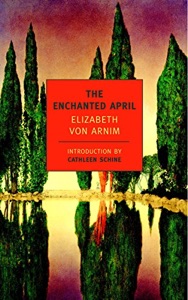My COVID work
- Worldvent, a low-cost ventilator from an all-volunteer team based at the University of Washington. We hope to have tens of thousands of these, this summer.
It’s an emergency. Don’t wait: do what you can to find a place where you can pitch in.
My Research
- Tinderbox: a tool for analyzing and visualizing notes.
- Storyspace: a tool for complex hypertext narrative.
- Villainy: research with Dr. Clare Hooper on supervillains and the Web. Also here.
- Links: Exercises In Style (with Stacey Mason)
Conference Papers Of Interest To Narrascope
- Patterns Of Hypertext
- On Hypertext Narrative
- Criticism
- My hypertext fiction, Those Trojan Girls, takes a look at a boarding school in an occupied country. Review by Em Short. Traversal by Dene Grigar. Really good interview with Stacey Mason. “She’s doesn’t want a revolution, she didn’t ask to get stuck in the middle of an insurgency. It’s not her fault. But those topless towers are going to burn.”
My Books
- The Tinderbox Way
- Getting Started With Hypertext Narrative
- Interwtingled (includes the short story, “Ophelia In My Pocket”)
Critical Theory
The best starting point is probably Terry Eagleton’s After Theory. People trained in science and engineering may find the Theory literature unpleasant; for them, the best entrance is George P. Landow’s masterful Hypertext 3.0. If you can find a copy, Silvio Gaggi’s From Text To Hypertext is a very accessible introduction to postmodernism in art.
Janet Murray’s Hamlet On The Holodeck is indispensable even though I believe it is mistaken.
Louis Menand’s wonderful piece on Pauline Kael, “Finding It At The Movies,” debuted in the New Yorker and can be found in his American Studies. Do not miss Menand’s wonderful study of The Cat In The Hat, “Cat People” (The New Yorker, 16 Dec 2002)
For narratology, the best entry point is unexpected: N. J.Lowe, The Classical Plot And The Invention Of Western Narrative.
Sooner or later, we all seem to write a version of Little Red. For mine, see my paper “On Hypertext Narrative”. For a look at the tale’s reach, see Robert Darnton, The Great Cat Massacre. Be wary of structuralism and other formal story grammars, keeping in mind (Darnton always does) that Propp’s movement has much in common with phlogiston.
For understanding “the digital” and what is yet to come, nothing beats Lars Spuybroek, The Sympathy Of Things: Ruskin and the Ecology Of Design.
Fiction
You will find a wealth of insight and guidance in imagined futures of narrative. Of particular interest are some recent titles:
- William Gibson, The Peripheral.
- Rainbow Rowell, Fangirl. “I’m strangely huge in Japan.”
- Allegra Goodman, The Chalk Artist.
- Murray Leinster, “A Logic Named Joe” (1946!)
- Rachel Aarons’ series begins with Minimum Wage Magic.
- Martha Wells’s latest Murderbot novel is Network Effects.
- Jo Walton on Friday: “The worst book I love.” Her novel Among Others is a perceptive study of fantasy and science fiction.
Artifacts And Performances
- William Wallace Cook, Plotto
- Jason Morningstar’s games
- Punchdrunk
- Little Fears
- No Country For Old Kobolds

